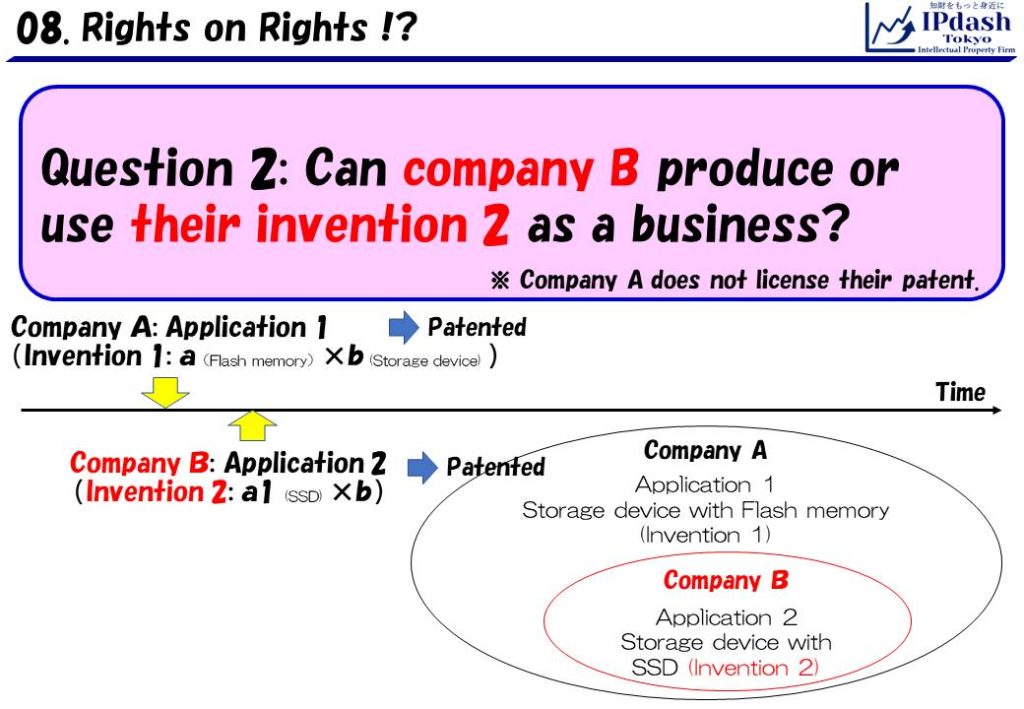
This is the 8th part of our seminar “Intellectual Property in Japan (Patent right)”.
“Invention utilizes other patented invention” will be explained in an easy-to-understand manner with slides.
☆ ☆ ☆
Chapter 3 “After Patent Acquisition” starts from this part.
Situations after patent acquisition will be described.
☆ ☆ ☆
3 questions will be displayed for duplicate rights.
How become a relationship of right between the rival companies, company A and B?

Company A and B are the rivals.
Company A developed a “Storage device with Flash memory (invention 1)” and obtained a patent about it.
After that, company B developed a “Storage device with SSD (Invention 2)”.
SSD (Solid-State Drive) is included in Flash memory.
Company B applied for a patent about invention 2 after the patent application of company A.
Invention 2 (SSD) shows high performance as a storage device compared to the previous flash memory.
Question 1: Does invention 2 of application 2 have a possibility to be patented?

Answer: Company B has a possibility to obtain a patent about invention 2 of application 2.
If SSD (element: a1) represents notable progress compared to the conventional flash memory (element: a), it can be patented.
That is, both patents of Company A and B are valid.
☆ ☆ ☆

Next question is continued from the first question.
Company B obtained the patent about invention 2 (Storage device with SSD).
Then, here is a question.
Can company B produce or use their invention 2 as a business without a license from company A?
☆ ☆ ☆

Company B can NOT produce or use their invention 2 as a business without license from company A.
(If company B worked (produced, used, etc.) the invention 2 as a business, it would infringes the patent of company A.)
The point is, even if company B obtained the patent of invention 2, they could not work the invention as a business. (They need license negotiation.)
☆ ☆ ☆

Question 3 is the same situation of question 2.
The subject of this question is company A.
Can company A producing or using invention 2 as a business?
Company A’s patent includes invention 2, and company B’s patent includes the invention too.
☆ ☆ ☆

Company A can NOT produce or use invention 2 as a business without license from company B either.
(If company A worked the invention 2 as a business, it would infringes the patent of company B.)
The point is, even if company A had the patent includes invention 2, they could not work the invention as a business. (They need license negotiation.)
☆ ☆ ☆

I’d like to wrap up with a summary of this part.
1. An invention which is included within the scope of other patent rights can be patented under some conditions.
2. In the part where the scope of patent rights are duplicated, each patentee can NOT work the patented invention without permission from the other.
☆ ☆ ☆
How did you like this part?
The relationships between duplicated patent rights are very difficult, so this part show some questions as examples.
I hope that will help your understandings.
☆ ☆ ☆
That’s all for Part 8 (Invention uses another person’s patented invention).
IPdash Tokyo Intellectual Property Firm (Japan)
(To Part 07) (To Part 09)
(To List)
